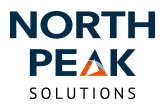
Resources:
- This article from our friends at Bigger Boat Consulting breaks down tactics for encouraging user adoption per organizational level, and has helpful tips for how to leverage Executive Sponsors and champions.
- This Salesforce.org article outlines the functions of a Governance Committee (what they call a “Center of Excellence”)
2. Listen to users, demonstrate value, and equip them to realize it.
Data quality starts with standardized and complete data entry. As we talked about in our first post on this topic, it’s essential to meet with business units to learn which data and related business processes are strategically important for them. Properly translating those processes in the system will create value for your users (e.g. reduced time spent on administration or reporting that provides new insights into impact).
Of course, an efficient CRM design is just the start. Users must be trained in how to take advantage of its streamlined business processes and data. They need to understand how to get the CRM working for them. Designing and delivering effective user training is a topic unto itself, though for this discussion, it’s important to highlight: The goal of user training should be both demonstrating the value that Salesforce offers them and equipping users to extract that value. If users understand how much time they can save by using automation tools or the new perspectives they have on their constituents using reporting, they’ll buy in. And that’s when the virtuous cycle begins: users adopt the CRM, do a great job entering and updating data, the CRM adds even more value, and so on.
Resources:
This page from Salesforce.com outlines many resources you can draw from to design and execute a comprehensive user training program
3. Quantify baselines and goals.
For each critical data point, build reports and gather them onto a dashboard to understand your baseline metrics, set goals, and monitor progress. These reports can serve to highlight problem areas.
For data quality reports, it’s often difficult to decide which data points to monitor. As a start, it’s useful to focus on a specific business goal and related data points per quarter. This helps avoid the pitfall of trying to tackle too many issues simultaneously and focuses your efforts on realizing well-defined ROI on a specific timeline.
For user adoption metrics, we recommend starting with a few key metrics, like:
- how often users are logging in
- whether they’re creating new and updating records
- whether they’re completing necessary fields on those records
NOTE: It’s possible some of your user adoption reports will overlap with your data quality reports.
Resources:
- Salesforce Labs offers an app that helps monitor data quality through pre-built reports and fields for scoring and describing data quality on records. This can be a great launchpad for your data quality reporting.
- Salesforce Labs offers an app that helps admins monitor adoption through pre-built reports and dashboards that provide insight on user login history and adoption of key features.
- The second section of the article reference above includes recommendations for how to build reports for your particular business needs.
- Field Trip is a free app that allows admins to find records that meet specific criteria and calculate the percentage of those records with data in key fields.
- This article on Exception Reporting focuses on how to monitor missing and contradictory data in your CRM. This is really useful for field-level data that’s unique to your organization.
Resources:
- This article outlines ways to leverage Chatter to increase user adoption.
We hope this makes a daunting challenge a bit easier to tackle. In our next post in the series, we’ll dive into what to do when you uncover data quality and/or user adoption issues.
Want to learn more about Data Quality and User Adoption best practices?
Contact North Peak to learn how we work with organizations to design and implement comprehensive CRM strategies.

About North Peak
North Peak helps nonprofits and foundations increase institutional intelligence through healthy CRM (constituent relationship management) and/or GMS (grant management system) systems and practices. Contact Us to learn how we can elevate your organization's impact.
